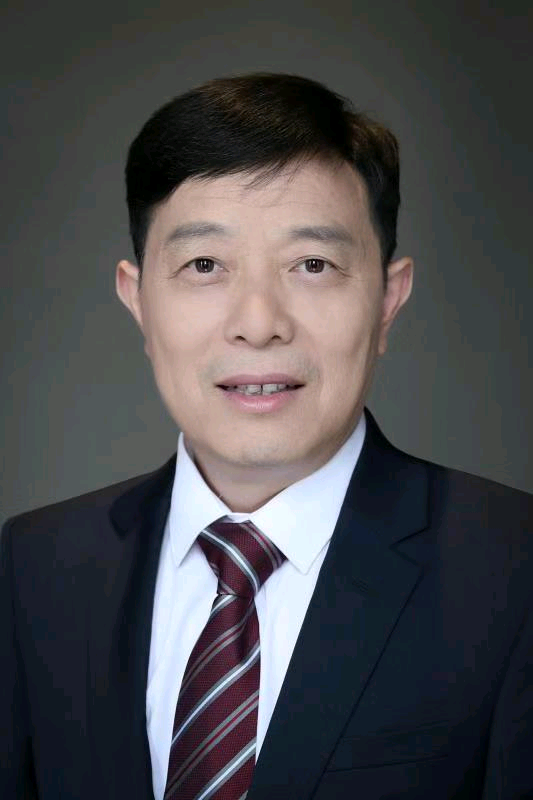

Prof. Wenquan Li
Southeast University, China
WenquanLi, Professor and Ph.D. Supervisor at Southeast University, was born in 1964. He received his bachelor's degree in Fundamental Mathematics from Henan University in 1987, after which he began his academic career at the same institution. He went on to earn a master’s degree in Operations Research from Zhengzhou University in 1994 and a Ph.D. in Traffic Management Engineering from Southwest Jiaotong University in 1997. Between 1997 and 1999, he completed postdoctoral research at Southeast University's Transportation Engineering postdoctoral research station. Since the completion of his postdoctoral work, he has been teaching at Southeast University's School of Transportation, focusing on transportation planning and management. Prof. Li is also a member of the Editorial Board of the Journal of Southeast University and has been selected for Jiangsu Province's "Six Talent Peaks" program. His research interests primarily include the optimization theories and methodologies for transportation organization, transportation planning and management, traffic flow theory and road capacity, and traffic safety.
Title:The Problem of Taffic Flow and Highway Capacity
Abstract:Highway capacity refers to the maximum traffic flow within a certain period of time, that highway facilities can handle within a specific traffic condition, road condition, and human measurement standard. Highway capacity is closely related to traffic flow and is a fundamental parameter for conducting traffic management. This report presents an overview of the origin, content, methods, communication, existing achievements, and future research prospects of the study on traffic flow and highway capacity, hoping to draw everyone's attention.

Prof. Rui Wang
Xi'an Jiaotong-Liverpool University, China
Rui Wang is a Suzhou Industrial Park International Leading Academic Talent and a Publishing Mentor for the Urban Affairs Association. He has been included in Stanford's List of World's Top 2% Scientists (career-long impact) since 2022. The List has also ranked him among the 16 most impactful urban & regional planning academics in Greater China since 2022. Professor Wang specializes in the public policy analysis for efficient, sustainable and inclusive urban development. His research appears in multiple disciplinary areas and has been covered in the Atlantic, Harvard Business Review, Los Angeles Times and New York Times. Professor Wang gave talks at the China Finance 40 Forum, Hong Kong Monetary Authority, Los Angeles World Affairs Council, RAND, World Bank, and numerous academic conferences and institutions. He is an editorial board member of journals such as the Journal of Urban Affairs, Transport Research Part D, and has also consulted for Beijing Municipal Institute of City Planning and Design, US Department of Housing and Urban Development, and the World Bank.
Title: Automated Vehicles: Recent Developments and Local Policy Implications
Abstract: The past few years have seen new developments in automated vehicle (AV) technologies and commercialization. However, unconstrained autonomous driving remains an aspiration, and little progress has been made in AV connection and system coordination. Nevertheless, applications of existing AV technologies, including the increasingly more intelligent driver assistance systems and most notably robotaxis, are making driving less labor intensive, especially for urban passenger travel. We provide updated policy recommendations on strategic planning, public-private collaboration and robotaxi regulation for cities to best leverage and adapt to these developments.

Prof. Ping Xiang
Central South University, China
Ping Xiang, Professor and PhD supervisor, is an expert selected for the Hunan Province High-Level Overseas Talent Introduction Program. He obtained his PhD from City University of Hong Kong in 2012 and subsequently served there as a postdoctoral researcher and associate researcher. He has led a General Program funded by the National Natural Science Foundation of China. In the past five years, he has published over 100 SCI papers, including ESI highly cited papers and multiple top-tier (Q1) SCI papers. He holds three authorized patents and three software copyrights. He also has six years of experience in structural design working for large design consulting firms both domestically and abroad.
Title: Running Safety Analysis of High-Speed Train Operation on Bridges During Earthquakes
Abstract: With the rapid development of high-speed railways, the issue of operational safety for high-speed trains traversing bridges during earthquakes is becoming increasingly prominent. Due to the problems existing in current mainstream derailment indicators for the safety assessment and stochastic analysis of train operation under seismic conditions within the wheel-rail contact state, this paper proposes, for the first time, a method for evaluating the seismic operational safety based on the stochastic response of the train-track-bridge system. A detailed wheel-rail contact model is established to calculate time-varying contact points and contact forces. Meanwhile, a stochastic vibration analysis framework for derailment of the train-track-bridge system is developed. The dynamic performance of a multi-span prestressed simply-supported box girder bridge under random seismic excitation is studied, and operational safety indicators are proposed for assessing the seismic operational safety of high-speed trains.

Assoc. Prof. Hanli Wu
Harbin Institute of Technology, China
Hanli Wu, Ph.D., is an Associate Professor in the School of Transportation Science and Engineering at the Harbin Institute of Technology (HIT), and also serves as the Assistant to the Dean for International Cooperation. He earned his Ph.D. in Geotechnical Engineering from the Missouri University of Science and Technology (USA), and holds an M.S. in Bridge and Tunnel Engineering and a B.S. in Civil Engineering from Hunan University. His research focuses on transportation infrastructure in cold regions and digital and intelligent structural inspection. Dr. Wu has achieved significant accomplishments in multiphysics modeling, climate-soil-structure interaction, high-performance computing, and frozen ground engineering. He has authored numerous high-quality publications in internationally renowned journals, including Cold Regions Science and Technology, Transportation Research Record, and Transportation Geotechnics, and has received over 10 international academic honors, such as the GeoShanghai 2024 Best Paper Award. As a Principal Investigator and Technical Lead, he has presided over and participated in multiple research projects funded by various organizations, including the National Key Research and Development Program of the Ministry of Science and Technology of China, the U.S. National Science Foundation (NSF), and the U.S. National Center for Transportation Infrastructure Durability and Life-Extension (TriDurLE). Additionally, he has frequently served in various roles at international academic conferences, including as an Organizing Committee Member, Session Chair, and Competition Judge.
Title: Use of Cellular Concrete Air Convection Embankment in Permafrost Regions
Abstract: For over three decades, crushed-rock air convection embankments (ACEs) have been used to stabilize permafrost and prevent thaw settlement in roadway infrastructure. However, the high cost of importing suitable rock to remote regions like interior Alaska has limited their widespread application. This study investigates cellular concrete as a viable and superior alternative material for ACE construction. Through laboratory testing, modeling, and numerical simulation, the thermal performance and feasibility of cellular concrete ACEs were systematically evaluated. The research demonstrates that cellular concrete ACEs offer enhanced thermal stability and a better cost-benefit ratio compared to conventional embankments. Specifically, they effectively mitigate moisture warping and temperature curling in the asphalt layer. A proposed design using hollow cellular concrete blocks significantly enhances winter air convection for subgrade cooling and improves summer thermal insulation. This approach proves highly effective in controlling thaw settlement in ice-rich permafrost, facilitating future implementation and construction.